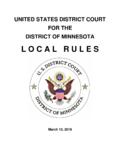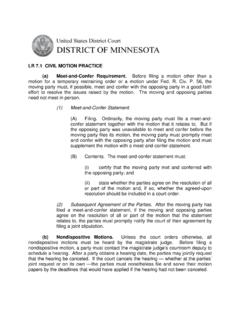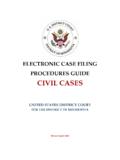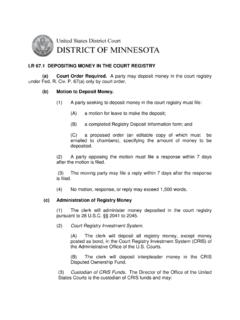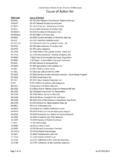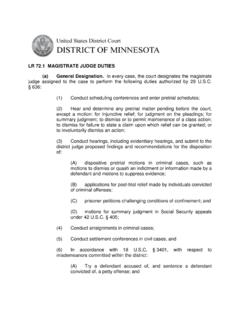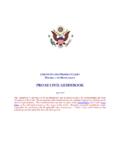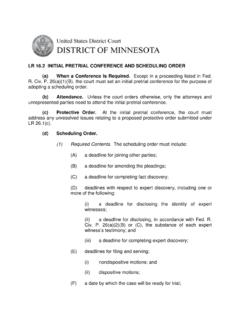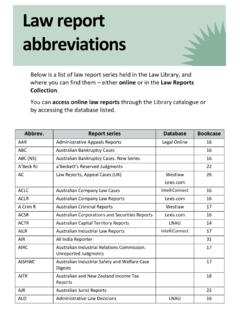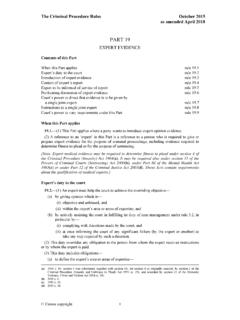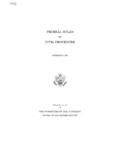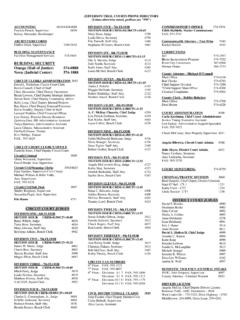Transcription of LR 12.1 CRIMINAL DISCOVERY AND PRETRIAL …
1 LR CRIMINAL DISCOVERY AND PRETRIAL MOTIONS (a) DISCOVERY . (1) To the extent practicable, the government must fulfill its DISCOVERY obligations under Fed. R. Crim. P. 16(a) within 7 days after the defendant s arraignment. (2) To the extent practicable, the defendant must fulfill the defendant s DISCOVERY obligations under Fed. R. Crim. P. 16(b) within 14 days after the defendant s arraignment. (b) Requirement to Confer. Before filing a motion under Fed. R. Crim. P. 12(b), the moving party must confer with the responding party. The parties must attempt in good faith to clarify and narrow the issues in dispute. (c) PRETRIAL Motions. (1) Moving Party. (A) Time Limits. A motion under Fed. R.
2 Crim. P. 12(b) must be filed within 21 days after the arraignment. (B) motion Contents. To the extent practicable, a motion under Fed. R. Crim. P. 12(b) to suppress evidence must identify that evidence and the nature of the challenge. (2) Responding Party Time Limits. A response to a motion under Fed. R. Crim. P. 12(b) must be filed within 35 days after the arraignment. (3) Notice of Intent to Call Witnesses. (A) Notice. When a party intends to call witnesses at a hearing on a motion under Fed. R. Crim. P. 12(b), the party must file a notice within 35 days after the arraignment. The notice must identify the number of witnesses whom the party intends to call, the motion or motions that each witness will be addressing, and the estimated duration of each witness s testimony.
3 (B) Responsive Notice. If after reviewing a notice under LR 12(c)(3), a party intends to call witnesses at the same hearing, that party must file a responsive notice within 38 days after the arraignment. The responsive notice must identify the number of witnesses whom the party intends to call, the motion or motions each witness will be addressing, and the estimated duration of each witness s testimony. (C) Defendant Testimony. A defendant is not required to declare in advance whether the defendant will testify at the hearing. (d) motion Hearing. The motion hearing will be scheduled no earlier than 42 days after the arraignment. (e) Modification of Schedule. The court may modify the requirements of this rule for good cause.
4 [Adopted effective October 13, 2014] 2014 Advisory Committee s Note to LR This rule is intended to promote early and comprehensive disclosures in CRIMINAL cases and an ongoing exchange of information between the parties, particularly as to DISCOVERY and suppression issues to be addressed at a hearing. Identification of the evidence that may be introduced at trial and the nature of any challenges to that evidence will facilitate efficient resolution of suppression and other motions. The requirement that the parties confer is not intended to alter the DISCOVERY obligations imposed by the Federal Rules of CRIMINAL Procedure and by case law. The conferral requirement is also not intended to require disclosure of information protected by the attorney-client privilege, work-product doctrine, or any other privilege.
5 This rule is further intended to provide magistrate judges with advance notice of the anticipated duration and complexity of a motion hearing. As a general rule, a hearing on one or more motions filed under Fed. R. Crim. P. 12(b) will be limited to the factual and legal issues addressed in the motion papers and to any unanticipated issues that arise at such hearings. The following table illustrates the timeline described in LR : Day Event LR Subsection Day X Arraignment Day X + 7 DISCOVERY of government (a)(1) Day X + 14 Reciprocal DISCOVERY of defendant (a)(2) Day X + 21 motion deadline (c)(1)(A) Day X + 35 motion response deadline and notice deadline (c)(2), (c)(3)(A) Day X + 38 Responsive notice deadline (c)(3)(B) Day X + 42 motion hearing (d) The schedule prescribed in this rule may be modified for good cause.
6 For example, modifications may be warranted in cases that involve complex issues or voluminous DISCOVERY . Likewise, modifications may be warranted to expedite cases involving little motion practice. The committee recognizes that a defendant may file a motion for example, a motion to compel disclosure under Brady v. Maryland, 373 83 (1963) in order to preserve the defendant s rights, even if there does not appear to be a dispute between the parties. This rule is not intended to interfere with that practice.

